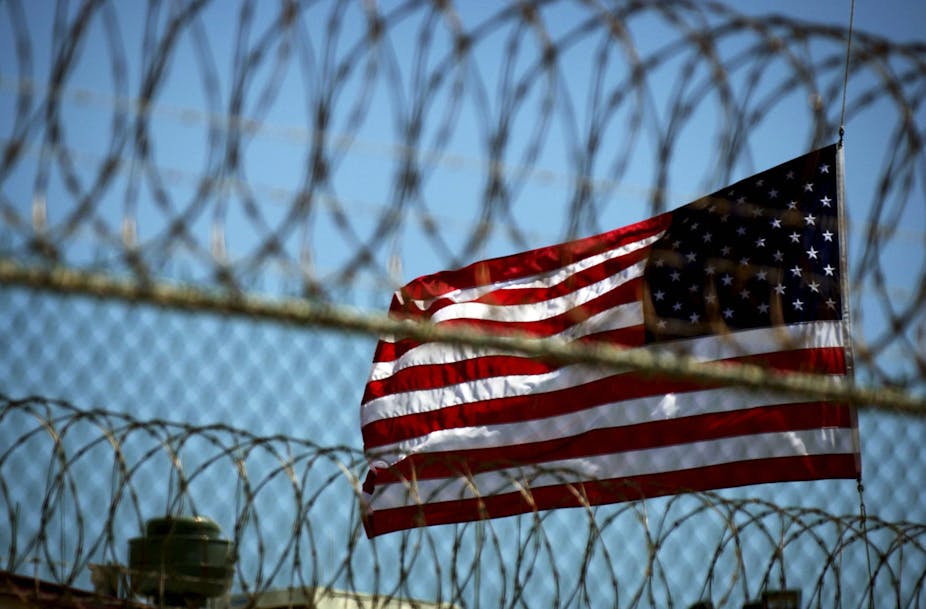It’s a deeply unpleasant thing to have to write, but torture may once again become part of the US’s national security arsenal. President Trump openly advocates it, and it may result from the measures envisaged in Detention and Interrogation of Enemy Combatants, a draft executive order from the new administration.
The order proposes a review of policies on the interrogation of “enemy combatants” and raises the possibility that certain CIA interrogation programmes and sites be revived and reopened. In short, it ignores the disastrous legacy of the Bush administration – in particular what the United Nations Committee against Torture called an “extraordinary rendition, secret detention and interrogation programme operated by the United States Intelligence Agency (CIA) between 2001 and 2008”, which “comprised numerous human rights violations, including torture, ill-treatment and enforced disappearance of persons suspected of involvement in terrorism-related crimes”.
A plethora of human rights bodies, courts, inquiries and writers have comprehensively exposed the George W. Bush administration’s attempts to redefine torture and justify its use. There is now a huge body of evidence that these attempts ran contrary to the prohibition of torture under international law, in both policy and practice.
The case for the absolute prohibition has been made again and again. Torture is one of the ultimate abuses of state power, and the use of extreme violence that exploits the powerlessness of individuals subject to state control is anathema to the rule of law. It easily becomes a licence to target anyone who is declared to be a threat; it frequently destroys its victims’s personalities and terrorises whole communities.
Contrary to claims made, there is scant evidence to support the idea of torture as effective and as a purely instrumental means to an end. In a long-awaited 2014 report into the CIA’s detention and interrogation programme by a US Senate select committee made this case in excruciating detail.
The report also made clear that there are, on the other hand, very good reasons to believe that torture is counterproductive, fuelling resentment against governments and militaries who use it.
Over the line
Notwithstanding the available, detailed knowledge of the devastating and corrosive impact of torture, it clearly retains its attraction, particularly in its populist incarnation. It promises security and suggests control, and ultimately serves as reassurance that “we” establish order on “our” terms. It was revived yet again as a supposedly legitimate tool of policy after 9/11 and popularised in certain media as the ultimate quick fix for exceptional situations.
Does this mean that we are about to witness a rerun of the prolonged struggle between those who advocate the use of torture and those who defend its absolute prohibition? There is some reason to be cautiously optimistic that those who seek to promote torture will find it more difficult this time.
True, the new US administration has already demonstrated a remarkable lack of respect for international legal standards and adopted discriminatory policies of excluding “others” declared to be security threat. However, over the last decade, advocacy, litigation and a change in administration combined to circumscribe the powers of any US administration and agencies.

Recent legislation clarifies that US authorities are only to use interrogation techniques authorised in the US Army Field Manual, which prohibits torture or other cruel, inhuman or degrading treatment or punishment. The draft executive order ominously requests a review of the interrogation policies set out in the field manual, but it also affirms that so-called enemy combatants shall not “be subjected to torture or cruel, inhuman or degrading treatment or punishment, as proscribed by US law”.
Then there’s the question of what help the US can expect from its allies. Several national governments accused of participating in torture and rendition have already faced litigation. If these countries get involved in US-sanctioned torture again, they could face renewed legal action and considerable political costs.
But none of this is to say that Trump’s talk of torture should be taken lightly. Such measures send a signal to other strongmen around the world that resorting to torture might well be considered acceptable for ostensible security purposes. Coming from the US especially, these gestures amount to tacit approval, if not encouragement.
And besides, the damage done in the post-9/11 era has already proven difficult to repair. Barack Obama’s experience is instructive: even though he issued an executive order to close the detention facility at Guantanamo Bay on his second day in office, it remains open after years spent fruitlessly trying to shut it down. In a bizarre change of direction, the draft executive order calls the camp “legal, safe and humane”.
The latest turn to contemplate the use of torture is playing with fire. If human rights is “the new religion”, as some of its critics call it, Trump’s torture proposals threaten to open the gates of hell.

